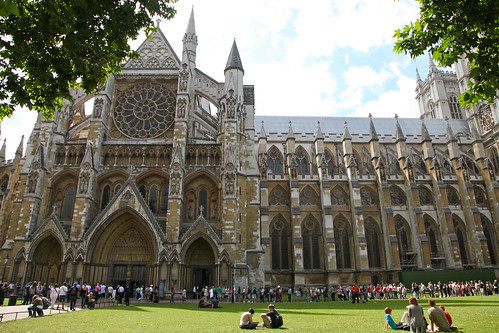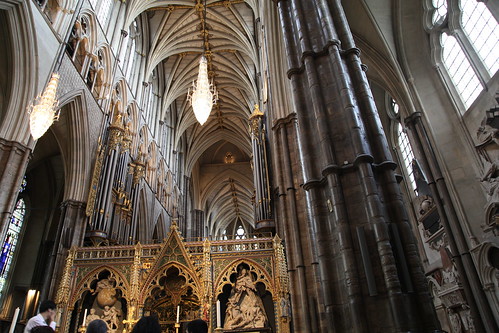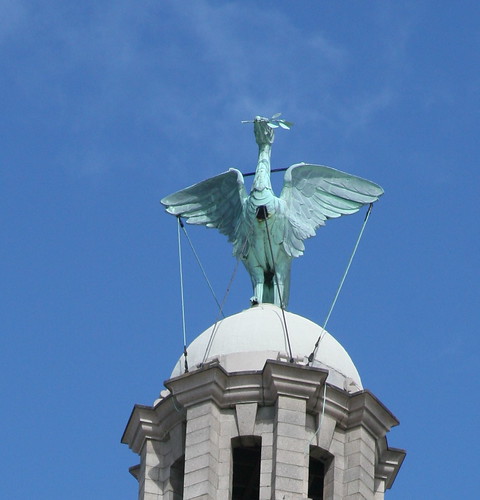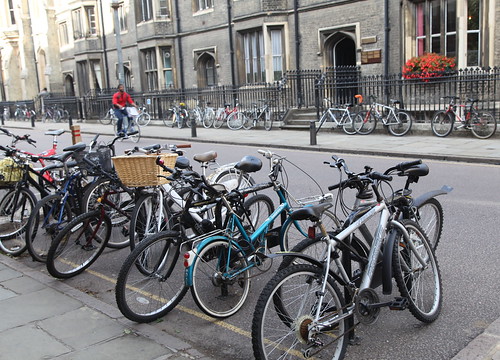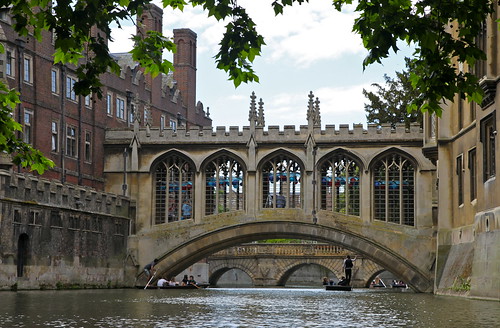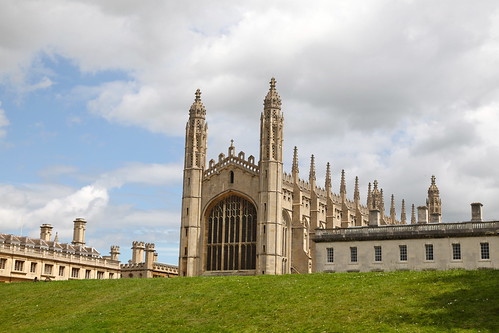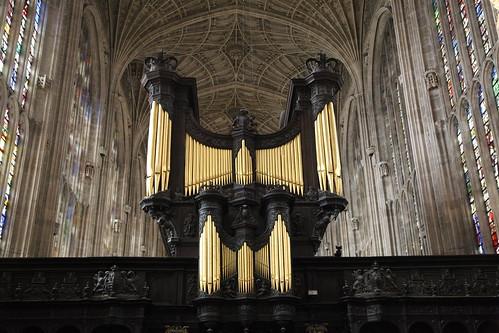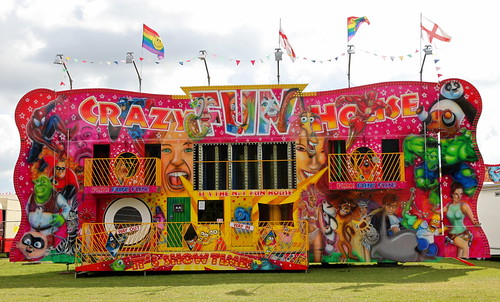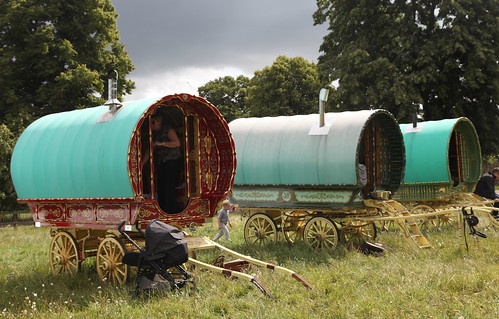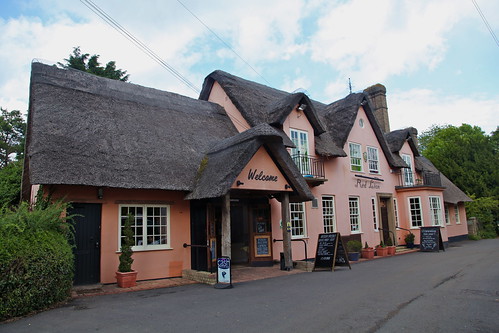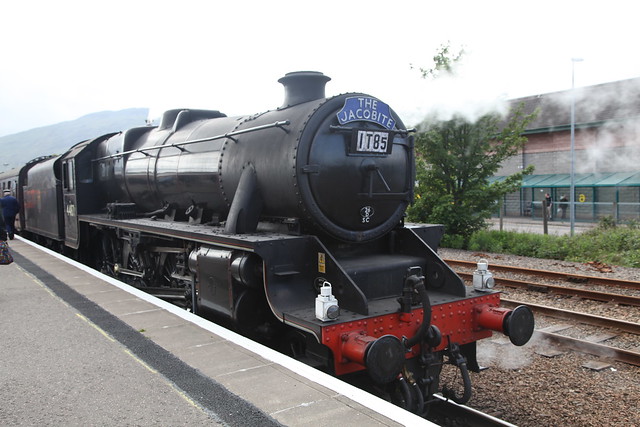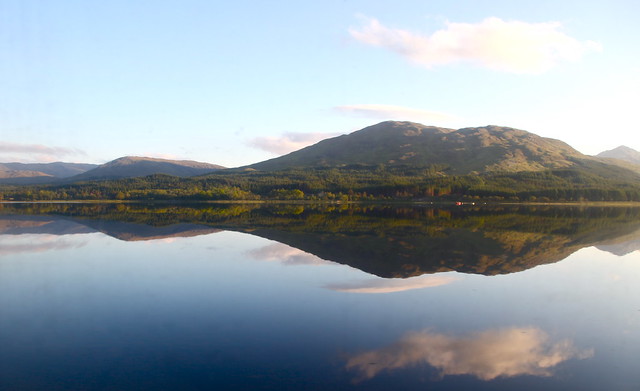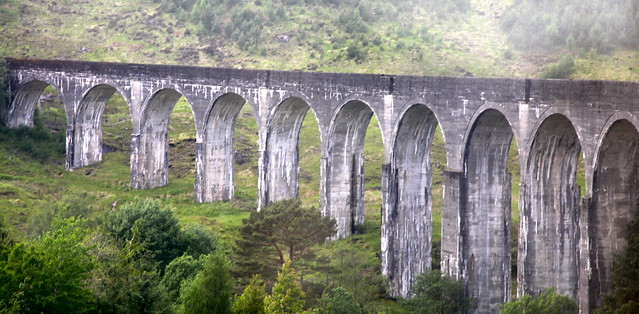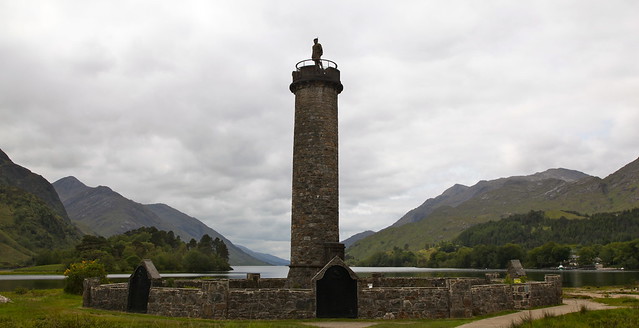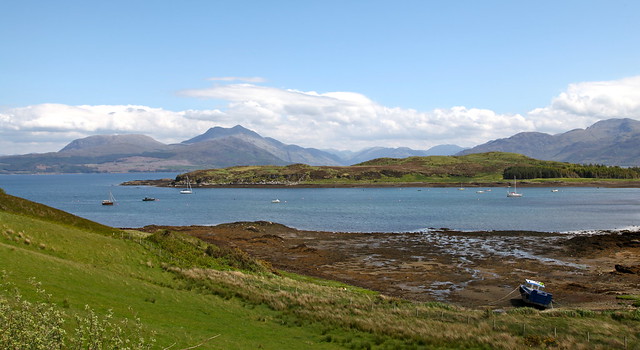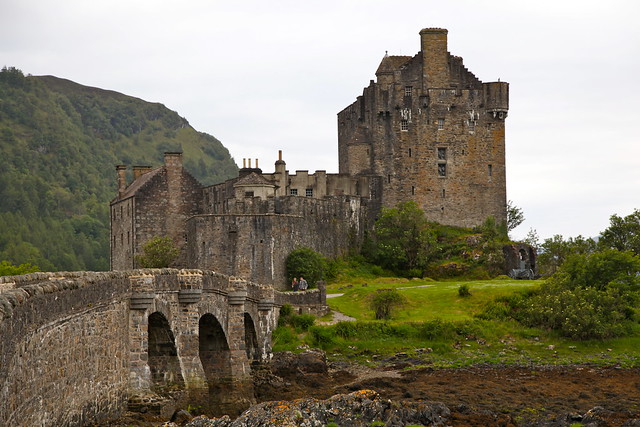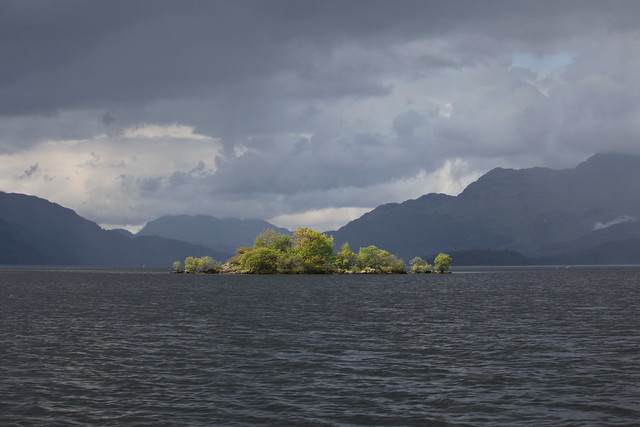From Cambridge I headed to Bath. The whole City of Bath is a World Heritage site and much of the surrounding countryside is owned by the National Trust. I didn't know that until I took the open top bus tour.
There are two bus tours: the Skyline and The City tours. I took both while I was there. The Skyline skirts around the city and goes up into the hills around it. It's supposed to give good views of the town but the damn trees get in the way. The City tour is better value as it gives you a good look at the main parts of the old town.
Bath is built in a big bowl, I think maybe it's an old volcano. The hot springs are what attracted people there of course. Back in the day people would go to Bath to "take the waters" for their health.
The first thing I noticed about Bath is the architecture.
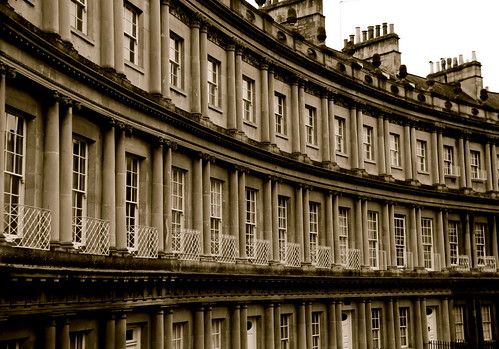
Pretty much everything is built from Bath limestone in the Georgian style. A guy called Ralph Allen pioneered the use of this stone and made a fortune in the process. It's soft as cheese before it's cured so is easy to quarry. It's very porous though. I was told that it costs an average of 10 to 15 thousand pounds to clean the outside of just one house. The dirt has to be sprayed lightly so that the water penetrates only the dirt and not the stone. Then sprayed again and again until the dirt can be taken off without damaging the stone. At that price I was surprised that the place looks quite clean!
Even though Bath has been settled since pre-Roman times, the architecture is almost exclusively Georgian (circa 1700s). Gets a bit samey after a while. In 1704 Beau Nash was made Master of Ceremonies in Bath and turned the place from a small spa town into England's most fashionable place to be and to be seen.
The oldest house still standing in Bath is the Sally Lunn tea room which dates back to 1482.
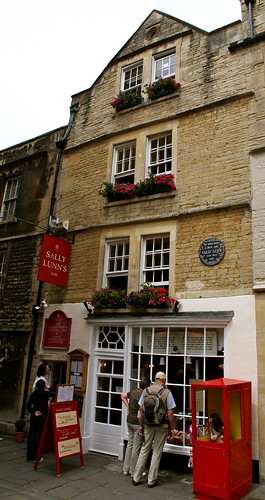
Sally Lunn was a French refugee who started a bakery there in 1680 and became famous for her buns. They're still made there to the original recipe. I stopped in for lunch. The buns are basically oversized bread rolls with a little bit of a croissanty texture. Not bad.
The Avon River runs through the city, but it's not the same Avon that runs through Stratford. There are several Avons in England apparently. The Romans, so the story goes, would ask the locals what their river was called and were told "the avon", so that became the river's name. Turns out that "avon" is the old Celtic word for "river". River River.
The Pulteney Bridge spans the river in the centre of town.

It's one of four bridges in the world that is lined with shops.

Two of the others are the Ponte Vecchio in Florence and the Rialto in Venice, both of which I've seen. Damned if I can find out what/where the fourth one is though.
There's a weir just below the bridge and another one a few miles up river at the village of Bathampton. I took the boat cruise which wanders from one weir to the other and back. Just for a change the sun was shining which made it a very pleasant hour's journey. There were lots of people punting and canoeing along the river too.
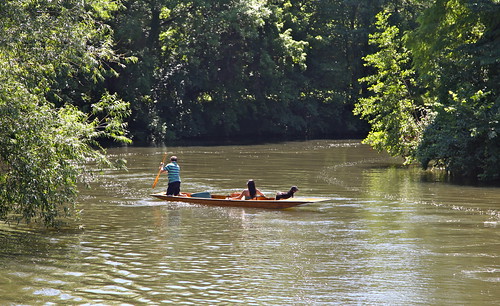
This guy had lost his punt pole - it got stuck in the mud. Raised a few chortles from us on the big boat :)
The bridge at Bathampton is now a main thoroughfare but is privately owned by a local family who've had it for centuries. Due to a medieval Royal Charter they have the right to charge tolls to cross the bridge but don't have to pay tax on the earnings. We were told that an average of 4,000 vehicles cross the bridge daily, all paying a tax-free toll. Nice little earner!
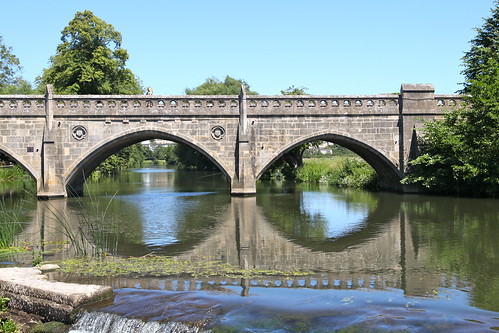
Much of central Bath is pedestrian only zones. There are more than enough shops and plenty of other stuff to look at.
The Abbey dominates the city skyline. It was quite badly damaged in WW2 but has been extensively restored.

It's lovely inside; very Gothic and great stained glass.
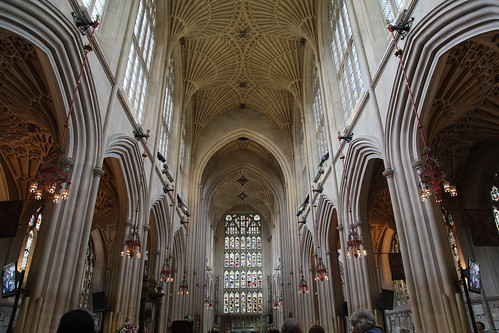
Of course, no trip to Bath would be complete without a visit to the Roman Baths complex.
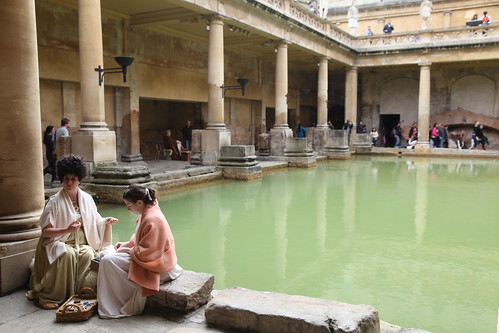
The Baths were, obviously, built by the Romans. An inscription on a stone pedestal has been found from 76AD so they've been there at least since then. Only two of the baths in the complex still have water in them. The large open air bath, in the photo, is the main one. The circular cold plunge pool is also still wet. The other baths in the complex are pretty much archaeological dig sites. The Sacred Spring has water of course. This is the source of the bath water. It comes out of the ground at an average temperature of 46C and only ever varies by one or two degrees.
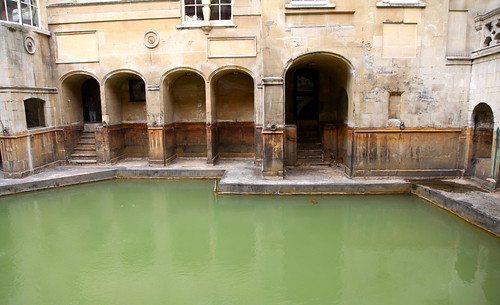
There's an overflow stream from this spring and you can see the steam rising from the heat of the water. The whole complex is quite amazing to wander through. The Romans really were impressive engineers. It's easy to imagine the place full of Romans; bathing, gossiping, doing deals, etc. Now, of course, it's all just a tourist attraction. In July and August the complex is open in the evenings and lit with torches. I was a week too early for that spectacle.
While in Bath I did a day trip across to Cheddar Gorge. It's the home of Cheddar cheese. The town is at the bottom of a large gorge with massive cliffs rising either side. If I hadn't just come back from the Scottish Highlands I probably would have been more impressed. The town itself is very pretty, despite the rain. I bought some cheese of course. Absolutely yummy! I also ventured into Gough's Cave. This is where they found Cheddar Man.

He's Britain's oldest complete skeleton, dating back to 7150BC.
The cave is nothing special at first, unless you like limestone. But inside is the most wonderful little rock pool in its own little cave.
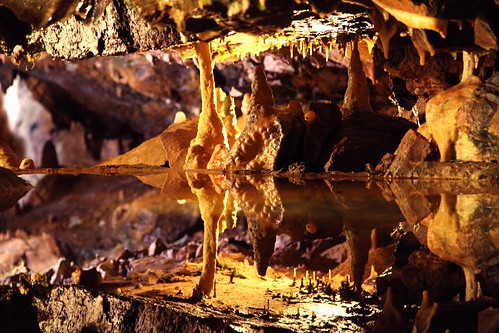
The water is so crystal clear. Amazing. It took ages to get this photo - water kept dripping into the pool, sending out gentle ripples which, though lovely to watch, spoilt the perfect reflections.
From Bath I headed back to Liverpool with one day to spare. The car I've been using has run out of road tax, as of July 1st, so can't be used anymore. I'm not going to pay for another year's tax and insurance as it's horrendously expensive. So my days of touring the UK as I please have come to an end. It's just about time to go home I think. I'll spend some time in London, maybe do a day trip or two by train across to Bruges and places like that. Then I'll be ready to go home.
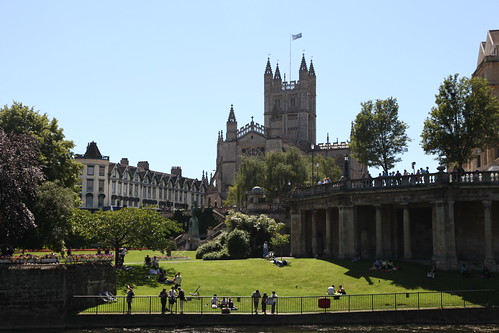
Later...

